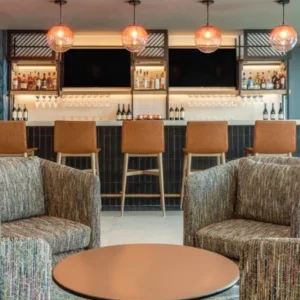Japan’s tourism sector has, over the past few years, faced numerous challenges. After a decline of 18.7% in 2009 as a result of the global financial crisis, Japan’s inbound tourism increased at a rate of 26.8% in 2010, but was followed by another sharp downturn in 2011 in the aftermath of an earthquake, subsequent tsunami and nuclear crisis. However, there has been a solid recovery in the past year, with the number of inbound tourists increasing by 34.6% in 2012 to reach 8.4 million. The tourism sector is expected to enjoy steady growth over the forecast period, with inbound tourist arrivals expected to reach 11.0 million by 2017. The key drivers for this growth are improving economic conditions and the government’s efforts to promote Japan as an attractive tourist destination. However, fears of natural disasters and the strong yen could still limit the sector’s expansion.
Domestic tourist volume decreased from 312.5 million tourists in 2008 to 304.4 million in 2012, declining at a CAGR of -0.66% during the review period. Trip volumes are expected to recover and rise over the forecast period, increasing at a CAGR of 1.68% to reach 330.9 million by 2017. The key growth drivers over the forecast period will be improved economic conditions, rising consumer confidence and government initiatives to increase domestic tourism. Domestic tourist expenditure is expected to increase at a CAGR of 2.80% over the forecast period, as compared with a decline in CAGR of 0.78% over the review period.
Following a decline of 18.7% in 2009 amid one of the worst global financial crises, the number of inbound tourists increased by 26.8%in 2010. This upturn was short-lived, with tourist volumes declining by 27.8% in the aftermath of the earthquake, subsequent tsunami and nuclear crisis.
Facts and figures
Outbound tourism is expected to rise at a CAGR of 3.77% over the forecast period, increasing from 18.5 million outbound departures in 2012 to 21.9 million in 2017. Outbound tourism spending is expected to rise from 4.7 trillion yen ($59.2 billion) in 2012 to 5.6 trillion yen ($71.2 billion) in 2017. The expansion in air transport capacity to key outbound destinations and the rise in value of the Japanese yen will support this upward trend.
Japan’s air traffic volume, domestically and internationally, decreased significantly during the review period due to the global financial crisis and the nuclear disaster in 2011. Passengers carried by Japanese and foreign airlines decreased from 106.6 million in 2008 to 89.2 million in 2012. Over the forecast period, the number of seats sold is expected to increase at a CAGR of 1.67% to reach 96.9 million in 2017, which is still lower than the pre-crisis level. Total revenue declined at a CAGR of 1.48% during the review period but is expected to reach 3.1 trillion yen ($39.2 billion) by 2017, after increasing at a CAGR of 3.91% over the forecast period.
The Japanese hotel industry registered a decline of 8.38% in total revenue, including room revenue and non-room revenue, during the review period. The downturn was steepest in 2011, when there was a decline of 18.7%, due to the natural disaster in the country. One of the major reasons for decline in revenue was the cancellation of more than 560,000 room bookings just after the earthquake in March 2011. Over the forecast period, total revenue is expected to increase at a CAGR of 1.71% to reach 3.4 trillion yen ($42.3 billion) in 2017, in line with the steady rise in tourism volumes.
Spotlight on Japan Airlines (JAL)
JAL has well-diversified airline operations that mitigate the risks associated with overdependence on single or select business segments for a major share of revenues. The company classifies its operations into four reportable segments: international passenger, domestic passenger, international and domestic cargo, and others.
Under its international passengers segment, the company operates a global network by offering flights to more than 221 airports in 40 countries and regions in partnership with its codeshare partners. The services offered by the company include: international fares, reservation and services, airport and check-in, in-flight service and travel information. For the domestic passengers segment, JAL provides flights to over 50 airports across Japan. The company’s services in the segment include domestic fares, service guide, reservations and purchasing, airport and check-in, in-flight service and travel information. The company’s international and domestic cargo segment offers cargo services for domestic and international markets. Under the others segment, JAL offers aircraft maintenance and catering services. Presence in these four segments avoids overdependence on any particular segment, minimising its business risks, as well as helping the company to serve a diversified customer base and generate higher revenues.
Membership of oneworld
Strong business partnerships help companies to benefit from the synergies. Being a member of a global alliance enables the company to strengthen its presence and network. JAL has been a member of oneworld since 2007. Launched in 1999, oneworld consists of 11 member airlines: American Airlines, British Airways, Cathay Pacific, Finnair, Iberia, Japan Airlines, LAN, Malev Hungarian Airlines, Mexicana, Royal Jordanian and S7 Airlines. oneworld provides high-quality services all over the world, including the provision of airport lounges and priority check-in counters and other facilities at more than 800 airports across 150 destination countries. This membership also benefits the company’s JMB members, allowing them to collect air miles on eligible fares, particularly when they fly with other oneworld member airlines. As many of the company’s customers are Japanese, this membership will help JAL in increasing its profile overseas. These partnerships support sharing of best practices while minimising expenses and ensuring contract deadlines.
Enhanced financial leverage
The enhanced financial leverage or solvency position of the company strengthens its ability to borrow and repay money, which in turn enhances its business operations. The solvency position of JAL is improved due to limited debt funding than equity. The company recorded a debt to equity ratio of 0.50 at the end of FY2012 against its competitors, Asiana Airlines (Asiana) and All Nippon Airways (ANA), which reported debt to equity ratios of 3.48 and 1.75 respectively. A strong solvency position indicates use of lower financial leverage and its comparatively higher equity position, underlining the better creditworthiness of the company.
Spotlight on All Nippon Airlines (ANA)
ANA’s strong market position has built its brand equity and helped the company to establish itself as a leading airline service provider in Japan. According to the International Air Transport Association (IATA), the company is the ninth-largest airline in the world in terms of passenger load. ANA is also the largest domestic carrier in Japan. In FY2012, ANA provided services to 39.02 million domestic passengers and carried 5.88 million international passengers. As of February 2013, the company operated a fleet of 231 aircraft, serving a network of 108 domestic and 67 international routes. Its market position helps the company in attracting a larger customer base, while improving its top-line performance.
Membership of Star Alliance
The company is a member of Star Alliance, which comprises 27 airlines. The Star Alliance network spans 1,356 airports in 193 countries with 21,555 daily flights. All members of the Star Alliance work in coordination by adjusting their flight times to enable better passenger connectivity. The company, through Star Alliance, offered joint frequent flyer programmes and signed contracts with other international carriers. Such an alliance helps in increasing revenues while reducing costs for airline members.
Strong operating performance
ANA displayed a strong operating performance in FY2012, during which the company recorded revenues of 1.41 trillion yen, at a compounded rate of 1.31% during 2008-12, with an annual growth of 3.97% over FY2011. The increase in revenue was primarily a result of an improved performance in the international market. The operating margin of ANA was 6.56% in FY2012, higher than its competitors, Qantas Airways Limited (Qantas) and Malaysian Airline System Berhad (Malaysian Airline), which reported operating margins of 2.17% and -16.84% respectively. Additionally, its return on equity (ROE) was 5.13% during the review period, significantly higher than its competitors, Qantas and Malaysian Airline, which reported ROEs of 4.07% and -242.11%, respectively. A strong operating performance against its peer group and industry therefore helps to enhance investors’ confidence and improve growth prospects.
To purchase the full report, contact marketing@timetric.com.






